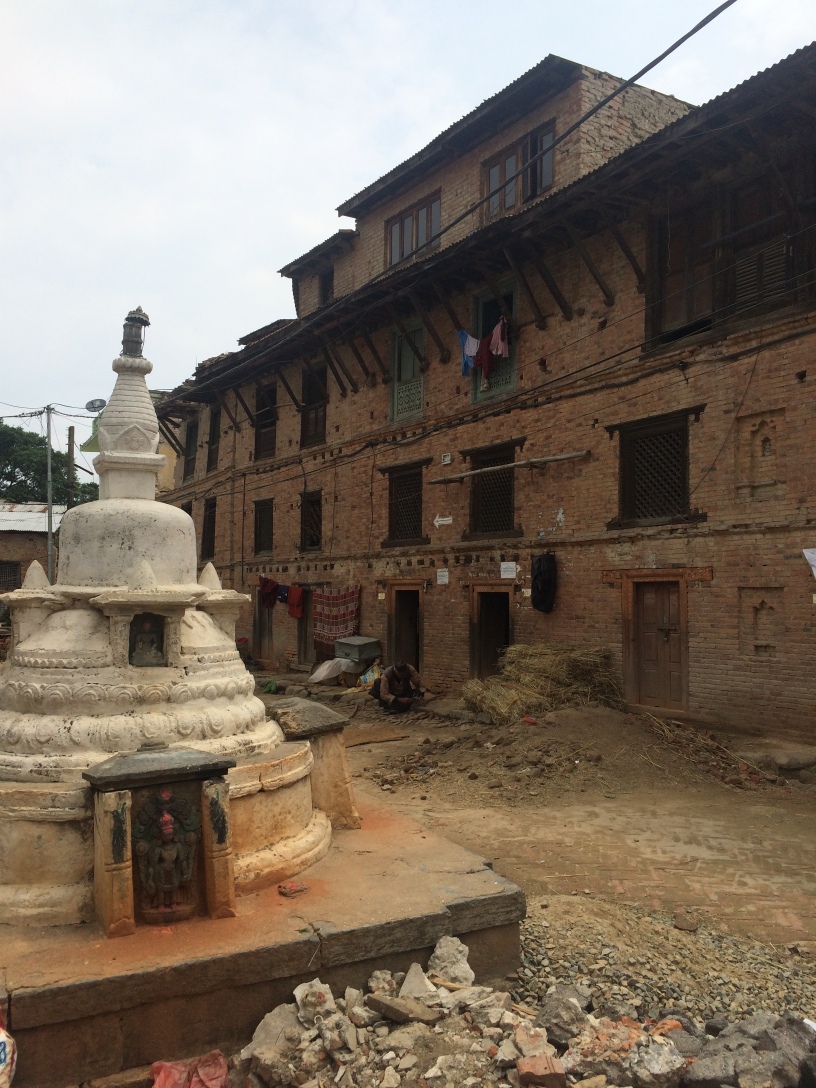The town of Bungamati is a short distance away from Kathmandu, 10km south of Patan. It has a population of around 6,000 and over 1,100 houses, most of which were damaged in the 2015 earthquakes. Bungamati is best known for its famous Budhist temple of Machhindranath, with a strong link to Patan through the Chariot Festival, one of the longest and most important celebrations in the city. Sadly, the temple was lost in the earthquake. Bungamati is one of more than 50 city-states developed in the Kathmandu Valley in the 12th century. These cities, most of which have survived to our days, were scattered throughout the valley and formed an interesting trade network, where each city specialised in a particular good which was the base of its economy.
For example, Bhaktapur produced ceramics, Patan produced carpets, and Bungamati produced wood carvings. This history of trade has consolidated into the town’s heritage, and is visible both in the architecture and in the craftsmanship business.
The historic heart of Bungamati, badly damaged in the earthquake, is built in brick and timber, with houses that are typically 3 or 4 stories high featuring decorated windows and balconies. These are the typical Newar style constructions. The houses are often built around patios or larger squares. The square around the Machhindranath temple is no doubt a key landmark in the town. Another is the pond or water reservoir, located centrally, only a few hundred meters away from the temple.
Currently many houses in the historic centre are unoccupied due to the earthquake damage and the population has been relocated to temporary shelters built mainly on the outskirts of the town. After more one year, reconstruction of the centre has barely started and the locals are waiting for support to face the enormous challenge to rebuild their homes.
The reconstruction efforts after the earthquakes have focused almost entirely on rural areas. By supporting the rural areas, the Nepalese government intended to slow down the fast migration to the Kathmandu Valley, which has experienced very rapid growth over the last decade. It is also undeniable that reconstruction of the rural areas is a less complex and less expensive initiative. Urban and peri-urban areas have thus been disregarded to a great extent by the reconstruction authorities, who have come up with policies and aid that are not suited for these contexts. The agreed household reconstruction grant of $2,000 USD falls 10 to 20 times short of the amount necessary for the reconstruction of a damaged house in the Kathmandu Valley. International agencies have not turned their attention to reconstruction in urban areas either. Only heritage appears to have attracted funding and initiatives in the Kathmandu Valley, the most urbanised part of the country.
However, only the preservation of monumental architecture has been addressed (with much interest on World Heritage sites), while other forms of heritage, tangible and intangible, remain unattended. Beyond the early efforts to build temporary shelters, the Kathmandu Valley has benefited from little initiatives from the authorities or from international agencies. Communities in the valley are struggling to make progress in the reconstruction of their towns. A number of factors play a part in this struggle, including:
• Lack of support from authorities, who are focusing their efforts in rural areas
• Lack of support from development agencies with sufficient capacity to address the specific needs of the communities in a prompt manner.
• Difficulties in obtaining sufficient funding to face the cost of reconstruction of their urban dwellings, due to the shortfall of the government aid and the lack of access to loans.
• Lack of built environment professionals with the right capacities to implement an appropriate reconstruction in the urban context.

